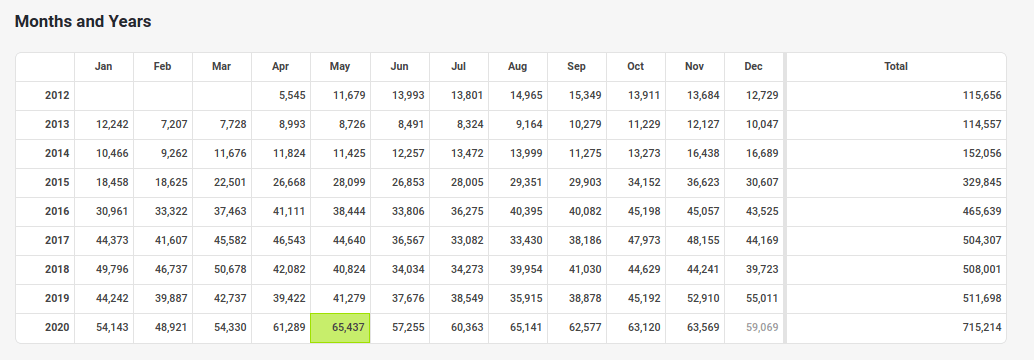In the first installment of my guide to blogging, I touched on how to choose a premise for your blog. Perhaps you already had some idea of what you wanted to do, or perhaps you wanted to blog but had no idea what to blog about. Either way, hopefully my post was a bit helpful.
This week, I’m touching on the next step in the process: choosing a blogging platform. This can be a little overwhelming, since there are a variety of options, some that cost money and some that don’t. I aim not to make an exhaustive list of all the options–simply put, I don’t know them all–but more to illustrate my own experiences with different platforms and to point out what I think is best depending on what you want out of a blog.
Let’s get the two easiest and most user friendly platforms out of the way first. These are Blogger (Blogspot when I used it, although I think it goes by both names) and WordPress.com. Both services have free options, and both are pretty intuitive to start for the most part. You can sign up and be blogging on the same day with very little set up time.
Now, I haven’t used Blogger in a long time, so it has probably changed in the mean time, but I found it less user friendly than WordPress.com. There are more options for customization if you know how to do HTML (again, this was when I was using it more than five years ago, so it has probably changed since then,) but overall the set up is far clunkier and harder to use than WordPress.com. There also seems to be less of a blogging community on Blogger. While it is a valid option, most bloggers starting out seem to prefer WordPress.com.
There are a lot of pros to starting a WordPress.com blog. The Dashboard is well organized and easy to navigate. You can choose from a variety of pre-built themes that have a lot of easy customization options built-in, allowing you to do a lot with little knowledge of coding.
In addition, there is a very large blogging community associated with WordPress.com. It’s easy to follow blogs from WordPress, and I noticed that when I ran WordPress.com blogs I got far more comments and subscribers than when I was on Blogger or even now that I self-host. Also, WordPress.com has a feature called “Freshly Pressed” where WordPress picks its top blogs and posts them prominently on the site. Getting a post freshly pressed leads to a huge spike in views and subscriptions, not to mention a nice ego boost from the surge in attention.
WordPress.com has a free, basic package that puts limits on amount of images you can post (I believe the limit is 3 gigabytes, which would take awhile to eat up.) There are paid options that have more features, but they are pretty pricey. WordPress.com has domain registration features as well. I believe it is $25 a year to register a domain with WordPress.com, including privacy protections (which you definitely want to get for the extra five or ten bucks.)
Registering a domain means you can get a customized domain that no one else can copy. The standard WordPress.com domain reads “fillinyourdomainhere.wordpress.com,” whereas a registered domain drops the “.wordpress.com” part. Some people feel that having their own domain registered makes a blog more legitimate, but if you don’t care about that, don’t worry about registering your domain. Overall, for a basic blog that isn’t really image heavy, a free WordPress.com blog would fit your needs perfectly.
If, however, you want a more elaborate blog without the limitations of a free WordPress.com blog or the expense of the upgraded options WordPress offers, self-hosting might be the route for you. All self-hosting means is that you own the domain and pay for server space on a hosting company’s servers.
The company I host through–Bluehost–allows for unlimited media and images, and will let me attach more than one domain to my hosting account (I only have one–I don’t recommend trying to run more than one blog at a time because you spread yourself too thin.) Hosting costs will vary depending upon your needs, and whether or not the hosting company is running any promotions at the time. On average, the basic hosting package through Bluehost is going to run about $120 a year, with an additional $25 or so for the domain registration fees for each domain you host (you have to register a domain if you self host, and again you want the privacy protection.)
Now, self-hosting has its downsides and upsides. The downsides are the costs, and the fact that it takes more technical knowhow to run a self-hosted blog. I recommend running WordPress.org for your blog–it gives you the same easy-to-use features as WordPress.com, especially if you use the Jetpack plug-in, which links your WordPress.org and WordPress.com accounts and lets you basically run your self-hosted blog like a free WordPress.com site.
Also, with WordPress.org you get access to similar templates as you would with a free WordPress blog. If you know coding, you can do more modifications of these templates than you could on a free site. There are good guides online to getting your self-hosted site up and running, and if you do it right you shouldn’t have to do much more than basic maintenance here and there. I don’t personally know much about coding or really anything computer related, but I got OddlyHistorical up and running with few problems, and it has needed very little maintenance in the year and a half it has been live. It’s definitely doable–it just takes more patience to operate, but the flexibility you get from self-hosting is well worth the effort. I recommend it if you’re serious about blogging and want to build a blog that will stand the test of time.
There you have it. A very short guide to choosing a blogging platform. To summarize, your best bet is going to be WordPress. If you want a free, easy to use platform, WordPress.com is the way to go. There are limitations, but this is a solid choice for the beginning blogger. You don’t want to spend a lot of money before you know that you like doing it.
So, if you’re new to blogging, sign up for a free WordPress.com site and start clacking away without worrying about hosting, domains, coding, and all that technical stuff. As you get into it more move toward a self-hosted blog. If need be, you can migrate a WordPress.com blog to a self-hosted blog later. It’s a hassle but doable.
I’ve glossed over a lot when it comes to considering different blogging platforms, especially when it comes to the self-hosting aspect, but this series is just meant to outline the basics. Next time we’re going to talk about how to compose a blog post, especially the importance of proper spelling, punctuation, and grammar. Stay tuned!


